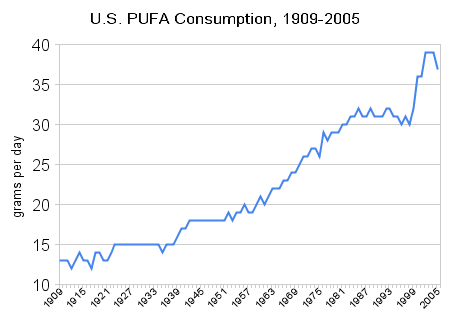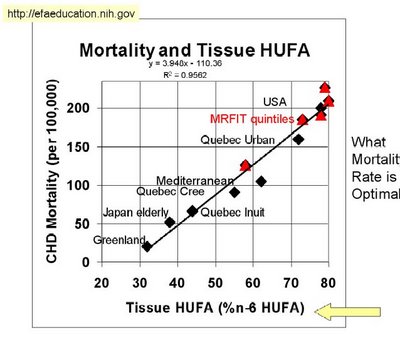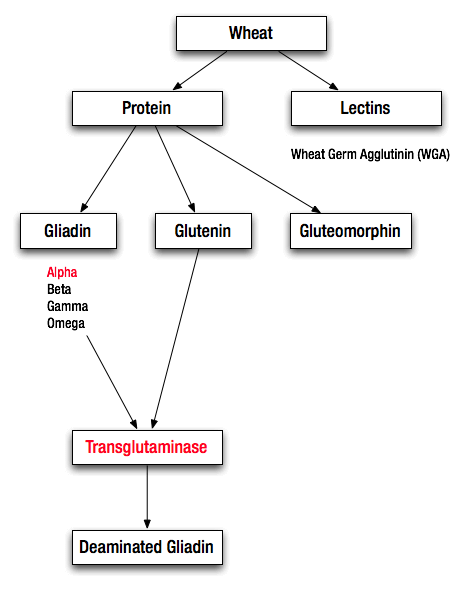Don’t Eat Toxins
Imagine a world where:
- diabetes, heart disease, autoimmunity and other modern diseases are rare or don’t exist at all
- we are naturally lean and fit
- we are fertile throughout our childbearing years
- we sleep peacefully and deeply
- we age gracefully without degenerative diseases like Alzheimer’s and osteoporosis
While this might sound like pure fantasy today, anthropological evidence suggests that this is exactly how human beings lived for the vast majority of our evolutionary history.
Today, most people accept diseases like obesity, diabetes, infertility and Alzheimer’s as “normal”. But while these diseases may now be common, they’re anything but normal. Humans evolved roughly 2.5 million years ago, and for roughly 84,000 generations we were naturally free of the modern diseases which kill millions of people each year and make countless others miserable. In fact, the world I asked you to imagine above – which may seem preposterous and unattainable today – was the natural human state for our entire history on this planet up until a couple hundred years ago.
What was responsible for the change? What transformed us from naturally healthy and vital people free of degenerative disease into a world of sick, fat, infertile and unhappy people?
In a word? The modern lifestyle. And though there are several aspects of our current lifestyle that contribute to disease, the widespread consumption of food toxins is by far the greatest offender. Specifically, the following four dietary toxins are to blame:
- Cereal grains (especially refined flour)
- Omega-6 industrial seed oils (corn, cottonseed, safflower, soybean, etc.)
- Sugar (especially high-fructose corn syrup)
- Processed soy (soy milk, soy protein, soy flour, etc.)
What is a toxin?
At the simplest level, a toxin is something capable of causing disease or damaging tissue when it enters the body. When most people hear the word “toxin”, they think of chemicals like pesticides, heavy metals or other industrial pollutants. But even beneficial nutrients like water, which are necessary to sustain life, are toxic at high doses.
In their book The Perfect Health Diet, Paul & Shou-Ching Jaminet apply the economic principle of declining marginal benefits to toxins:
It implies that the first bit eaten of any toxin has low toxicity. Each additional bit is slightly more toxic than the bit before. At higher doses, the toxicity of each bit continues to increase, so that the toxin is increasingly poisonous. 1
This is important to understand as we discuss the role of dietary toxins in contributing to modern disease. Most of us won’t get sick from eating a small amount of sugar, cereal grain, soy and industrial seed oil. But if we eat those nutrients (or rather anti-nutrients) in excessive quantities, our risk of developing modern diseases rises significantly.
That’s exactly what’s happening today. These four food toxins – refined cereal grains, industrial seed oils, sugar and processed soy – comprise the bulk of the modern diet. Bread, pastries, muffins, crackers, cookies, soda, fruit juice, fast food and other convenience foods are all loaded with these toxins. And when the majority of what most people eat on a daily basis is toxic, it’s not hard to understand why our health is failing.
Let’s look at each of these food toxins in more detail.
Cereal grains: the unhealthiest “health food” on the planet?
The major cereal grains – wheat, corn, rice, barley, sorghum, oats, rye and millet – have become the staple crops of the modern human diet. They’ve also become the “poster children” of the low-fat, high-carbohydrate diet promoted by organizations like the American Heart Association (AHA) and American Diabetes Association (ADA). If you say the phrase “whole grains” to most people, the first word that probably comes to their mind is “healthy”.
But the fact is that most animals, including our closest relative (the chimpanzee) aren’t adapted to eating cereal grains and don’t eat them in large quantities. And humans have only been eating them for the past 10,000 years (a tiny blip of time on the scale of evolution). Why?
Because plants like cereal grains are always competing against predators (like us) for survival. Unlike animals, plants can’t run away from us when we decide to eat them. They had to evolve other mechanisms for protecting themselves. These include:
- producing toxins that damage the lining of the gut;
- producing toxins that bind essential minerals, making them unavailable to the body; and,
- producing toxins that inhibit digestion and absorption of other essential nutrients, including protein.
One of these toxic compounds is the protein gluten, which is present in wheat and many of the other most commonly eaten cereal grains. In short, gluten damages the intestine and makes it leaky. And researchers now believe that a leaky gut is one of the major predisposing factors for conditions like obesity, diabetes and autoimmune disease.
Celiac disease (CD) – a condition of severe gluten intolerance – has been well known for decades. Celiacs have a dramatic and, in some cases, potentially fatal immune response to even the smallest amounts of gluten.
But celiac disease is just the tip of the iceberg when it comes to intolerance to wheat and other gluten containing grains. Celiac disease is characterized by antibodies to two components of the gluten compound: alpha-gliadin, and transglutaminase. But we now know that people can and do react to several other components of wheat and gluten. The diagram below shows how wheat and gluten are broken down in the body:
Current laboratory testing for gluten intolerance only tests for alpha-gliadin and transglutaminase, the two components of gluten implicated in celiac disease (highlighted in red in the diagram). But as you can see, wheat contains several other components including lectins like wheat germ agglutinin (WGA), other epitopes of the gliadin protein like beta-gliadin, gamma-gliadin and omega-gliadin, another protein called glutenin, an opioid peptide called gluteomorphin, and a compound called daminated gliadin produced by the industrial processing or digestion of gluten.
So here’s the thing. Studies now clearly show that people can react negatively to all of these components of wheat – not just the alpha-gliadin and transglutaminase that celiacs react to. And the worst part of this is that up until about 2 weeks ago, no commercial labs were testing for sensitivity to these other subfractions of wheat.
This means, of course, that it’s extremely likely that far more people are intolerant to wheat and gluten than conventional wisdom would tell us. In fact, that’s exactly what the latest research shows. Dr. Kenneth Fine, a pioneer in gluten intolerance research, has demonstrated that 1 in 3 Americans are gluten intolerant, and that 8 in 10 have the genes that predispose them to developing gluten intolerance.
This is nothing short of a public health catastrophe in a nation where the #1 source of calories is refined flour. But while most are at least aware of the dangers of sugar, trans-fat and other unhealthy foods, fewer than 1 in 8 people with celiac disease are aware of their condition. 2 A 1999 paper in the British Medical Journal illustrated this well: 3
Patients with clinically obvious celiac disease (observable inflammation and destruction of the gut tissue) comprise only 12.5% of the total population of people with CD. 87.5% of those with celiac have no obvious gut symptoms. For every symptomatic patient with CD, there are 8 patients with CD and no gastrointestinal symptoms.
But does that mean patients with CD without gut symptoms are healthy? Not at all. It was long believed that the pathological manifestations of CD were limited to the gastrointestinal tract. But research over the past few decades has revealed that gluten intolerance can affect almost every other tissue and system in the body, including:
- brain;
- endocrine system;
- stomach and liver;
- nucleus of cells;
- blood vessels; and,
- smooth muscle,
just to name a few!
This explains why CD and gluten intolerance are associated with several different diseases, including type 1 diabetes, thyroid disorders, osteoporosis, neurodegenerative conditions like Alzheimer’s, Parkinson’s and dementia, psychiatric illness, ADHD, rheumatoid arthritis, migraine, obesity and more. The table below from the same 1999 BMJ paper depicts the increased incidence of other diseases in patients with CD: 4
As you can see, up to 17% of people with CD have an “undefined neurological disorder”. But even that alarmingly high statistic only accounts for people with diagnosed CD. We know that only 1 in 8 people with CD are diagnosed. We also know that those with CD represent only a small fraction of the population of people with gluten intolerance. With this in mind, it’s not hard to imagine that the number of people with gluten intolerance that have “undefined neurological disorders” (and other associated conditions on the list above) could be significantly higher than current research suggests.
Finally, we also now know that when you are gluten intolerant – which 33% (if not more) of you are – you will also “cross-react” with other foods that have a similar “molecular signature” to gluten and its components. Unfortunately, the list of these foods (shown below) contains all grains, which is why some medical practitioners (myself included) recommend not just a gluten-free diet, but an entirely grain-free diet. As you can see, it also contains other foods like dairy (alpha & beta casein, casomorphin, milk butyrophilin) and coffee (which is a very common cross-reactant).
- alpha-caesin
- beta-caesin
- casomorphin
- milk butyrophilin
- cow’s milk
- american cheese
- chocolate
- coffee
- all cereal grains
- quinoa
- amaranth
- buckwheat
- tapioca
- rice
- potato
- corn
- sesame
Industrial seed oils: unnatural and unfit for human consumption
Industrial seed oils (corn, cottonseed, soybean, safflower, sunflower, etc.) have not been a part of the human diet up until relatively recently, when misguided groups like the AHA and the ADA started promoting them as “heart-healthy” alternatives to saturated fat.
The graph below shows how dramatically seed oil consumption has risen over the past several decades:

Throughout 4-5 million years of hominid evolution, diets were abundant in seafood and other sources of omega-3 long chain fatty acids (EPA & DHA), but relatively low in omega-6 seed oils.
Anthropological research suggests that our hunter-gatherer ancestors consumed omega-6 and omega-3 fats in a ratio of roughly 1:1. 5 It also indicates that both ancient and modern hunter-gatherers were free of the modern inflammatory diseases, like heart disease, cancer, and diabetes, that are the primary causes of death and morbidity today. 6
At the onset of the industrial revolution (about 140 years ago), there was a marked shift in the ratio of n-6 to n-3 fatty acids in the diet. Consumption of n-6 fats increased at the expense of n-3 fats. 7 This change was due to both the advent of the modern vegetable oil industry and the increased use of cereal grains as feed for domestic livestock (which in turn altered the fatty acid profile of meat that humans consumed).
The following chart lists the omega-6 and omega-3 content of various vegetable oils and foods:

Vegetable oil consumption rose dramatically between the beginning and end of the 20th century, and this had an entirely predictable effect on the ratio of omega-6 to omega-3 fats in the American diet. 8 Between 1935 and 1939, the ratio of n-6 to n-3 fatty acids was reported to be 8.4:1. From 1935 to 1985, this ratio increased to 10.3:1 (a 23% increase). Other calculations put the ratio as high as 12.4:1 in 1985. Today, estimates of the ratio range from an average of 10:1 to 20:1, with a ratio as high as 25:1 in some individuals. 9
In fact, Americans now get almost 20% of their calories from a single food source – soybean oil – with almost 9% of all calories from the omega-6 fat linoleic acid (LA) alone! 10
This reveals that our average intake of n-6 fatty acids is between 10 and 25 times higher than evolutionary norms. The consequences of this dramatic shift cannot be underestimated.
So what are the consequences to human health of an n-6:n-3 ratio that is up to 25 times higher than it should be?
The short answer is that elevated n-6 intakes are associated with an increase in all inflammatory diseases 11 - which is to say virtually all diseases. The list includes (but isn’t limited to):
- cardiovascular disease
- type 2 diabetes
- obesity
- metabolic syndrome
- irritable bowel syndrome & inflammatory bowel disease
- macular degeneration
- rheumatoid arthritis
- asthma
- cancer
- psychiatric disorders
- autoimmune diseases
The relationship between intake of n-6 fats and cardiovascular mortality is particularly striking. The following chart, from an article entitled Eicosanoids and Ischemic Heart Disease by Stephan Guyenet, clearly illustrates the correlation between a rising intake of n-6 and increased mortality from heart disease: 12

As you can see, the USA is right up there at the top with the highest intake of n-6 fat and the greatest risk of death from heart disease.
On the other hand, several clinical studies have shown that decreasing the n-6:n-3 ratio protects against chronic, degenerative diseases. 13 One study showed that replacing corn oil with olive oil and canola oil to reach an n-6:n-3 ratio of 4:1 led to a 70% decrease in total mortality. 14 That is no small difference.
Joseph Hibbeln, a researcher at the National Institute of Health (NIH) who has published several papers on n-3 and n-6 intakes, didn’t mince words when he commented on the rising intake of n-6 in a recent paper:
The increases in world LA consumption over the past century may be considered a very large uncontrolled experiment that may have contributed to increased societal burdens of aggression, depression and cardiovascular mortality. 15
And those are just the conditions we have the strongest evidence for. It’s likely that the increase in n-6 consumption has played an equally significant role in the rise of nearly every inflammatory disease. Since it is now known that inflammation is involved in nearly all diseases, including obesity and metabolic syndrome, it’s hard to overstate the negative effects of too much omega-6 fat.
Refined sugar: the sweetest way to wreck your health
About 20 years ago, Nancy Appleton, PhD, began researching all of the ways in which sugar destroys our health. Over the years the list has continuously expanded, and now includes 141 points. 16 Here’s just a small sampling (the entire list can be found on her blog).
- Sugar feeds cancer cells and has been connected with the development of cancer of the breast, ovaries, prostate, rectum, pancreas, lung, gallbladder and stomach.
- Sugar can increase fasting levels of glucose and can cause reactive hypoglycemia.
- Sugar can cause many problems with the gastrointestinal tract, including an acidic digestive tract, indigestion, malabsorption in patients with functional bowel disease, increased risk of Crohn’s disease and ulcerative colitis.
- Sugar can interfere with your absorption of protein.
- Sugar can cause food allergies.
- Sugar contributes to obesity.
White table sugar (sucrose) is composed of two sugars: glucose and fructose. Glucose is an important nutrient in our bodies and is healthy, as long as it’s consumed in moderation.
Fructose is found primarily in fruits and vegetables, and sweeteners like sugar and high-fructose corn syrup (HFCS). Naturally occurring fructose is not an essential nutrient, like glucose, but when consumed in the form of whole foods it is easily handled by the body.
The problem with sugar occurs when it is eaten in excess. Unfortunately, that has become the norm in the U.S. A recent USDA report found that the average American eats 152 pounds of sugar each year, including almost 64 pounds of HFCS. 17
Refined sugar is particularly problematic because it tends to promote unintentional overeating. Studies have shown that people that consume a lot of refined sugar do not tend to compensate by reducing calories elsewhere in the diet. This doesn’t happen with fruit or other whole foods that contain glucose or fructose. When people add fruit to their diet, they reduce their calorie intake elsewhere to compensate. Not so with liquid-sweetened beverages like soft drinks. When people add a soda or two a day to their diet, they tend not to reduce consumption of other foods, and thus their calorie intake increases.
This is one area where fructose does appear to be more harmful than glucose. Although people don’t compensate for calories added via glucose or fructose, fructose-sweetened beverages have more detrimental metabolic effects than glucose-sweetened beverages.
Soy: another toxin promoted as a health food
Like cereal grains, soy is another toxin often promoted as a health food. It’s now ubiquitous in the modern diet, present in just about every packaged and processed food in the form of soy protein isolate, soy flour, soy lecithin and soybean oil.
For this reason, most people are unaware of how much soy they consume. You don’t have to be a tofu-loving hippie to eat a lot of soy. In fact, the average American – who is most definitely not a tofu-loving hippie – gets up to 9% of total calories from soybean oil alone.
Whenever I mention the dangers of soy in my public talks, someone always protests that soy can’t be unhealthy because it’s been consumed safely in Asia for thousands of years. There are several reasons why this isn’t a valid argument.
First, the soy products consumed traditionally in Asia were typically fermented and unprocessed – including tempeh, miso, natto and tamari. This is important because the fermentation process partially neutralizes the toxins in soybeans.
Second, Asians consumed soy foods as a condiment, not as a replacement for animal foods. The average consumption of soy foods in China is 10 grams (about 2 teaspoons) per day and is 30 to 60 grams in Japan. These are not large amounts of soy.
Contrast this with the U.S. and other western countries, where almost all of the soy consumed is highly processed and unfermented, and eaten in much larger amounts than in Asia.
How does soy impact our health? The following is just a partial list:
- Soy contains trypsin inhibitors that inhibit protein digestion and affect pancreatic function;
- Soy contains phytic acid, which reduces absorption of minerals like calcium, magnesium, copper, iron and zinc;
- Soy increases our requirement for vitamin D, which 50% of American are already deficient in;
- Soy phytoestrogens disrupt endocrine function and have the potential to cause infertility and to promote breast cancer in adult women.
- Vitamin B12 analogs in soy are not absorbed and actually increase the body’s requirement for B12;
- Processing of soy protein results in the formation of toxic lysinoalanine and highly carcinogenic nitrosamines;
- Free glutamic acid or MSG, a potent neurotoxin, is formed during soy food processing and additional amounts are added to many soy foods to mask soy’s unpleasant taste; and,
- Soy can stimulate the growth of estrogen-dependent tumors and cause thyroid problems, especially in women.
Perhaps most alarmingly, a study at the Harvard Public School of Health in 2008 found that men who consumed the equivalent of one cup of soy milk per day had a 50% lower sperm count than men who didn’t eat soy. 18
In 1992, the Swiss Health Service estimated that women consuming the equivalent of two cups of soy milk per day provides the estrogenic equivalent of one birth control pill. That means women eating cereal with soy milk and drinking a soy latte each day are effectively getting the same estrogen effect as if they were taking a birth control pill.
This effect is even more dramatic in infants fed soy formula. Babies fed soy-based formula have 13,000 to 22,000 times more estrogen compounds in their blood than babies fed milk-based formula. Infants exclusively fed soy formula receive the estrogenic equivalent (based on body weight) of at least five birth control pills per day.
Click here for a complete list of studies demonstrating the harmful effects of soy products.
- The Perfect Health Diet ↩
- http://www.ncbi.nlm.nih.gov/pubmed/18184122 ↩
- http://www.bmj.com/content/319/7204/236.full.pdf ↩
- http://www.bmj.com/content/319/7204/236.full.pdf ↩
- http://www.ajcn.org/cgi/content/full/71/1/179S?ijkey=5c7af875f3dc71a303f7df78c52145e8b7c31643 ↩
- http://donmatesz.blogspot.com/2010/02/paleo-life-expectancy.html ↩
- http://agris.fao.org/agris-search/search/display.do?f=./1989/v1507/US8845581.xml;US8845581 ↩
- http://www.ajcn.org/cgi/content/full/71/1/179S?ijkey=5c7af875f3dc71a303f7df78c52145e8b7c31643 ↩
- http://www.ncbi.nlm.nih.gov/pubmed/19022225 ↩
- http://www.cnpp.usda.gov/publications/foodsupply/foodsupply1909-2004report.pdf ↩
- http://www.ajcn.org/cgi/content/abstract/83/6/S1483 ↩
- http://wholehealthsource.blogspot.com/2009/05/eicosanoids-and-ischemic-heart-disease.html ↩
- http://www.ncbi.nlm.nih.gov/pubmed/19022225 ↩
- http://content.onlinejacc.org/cgi/content/short/47/10/2130 ↩
- http://www.ncbi.nlm.nih.gov/pubmed/19022225 ↩
- http://nancyappleton.com/141-reasons-sugar-ruins-your-health/ ↩
- http://www.usda.gov/factbook/chapter2.pdf ↩
- http://humrep.oxfordjournals.org/content/23/11/2584.full ↩




 Type 3 Diabetes
Type 3 Diabetes

